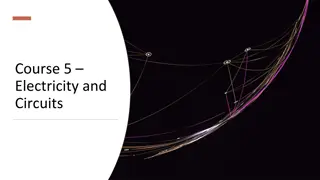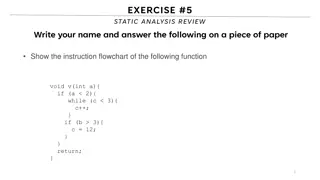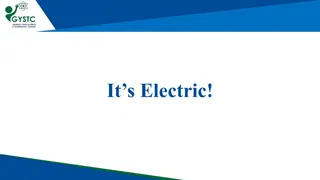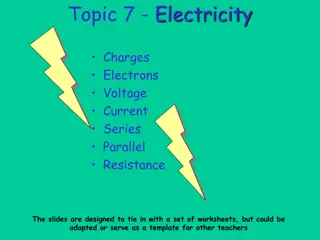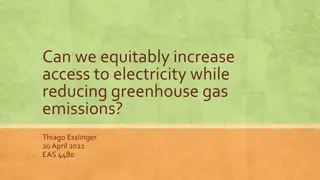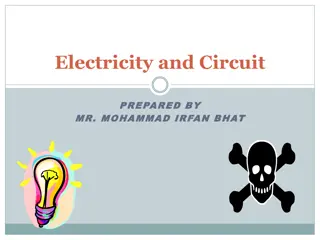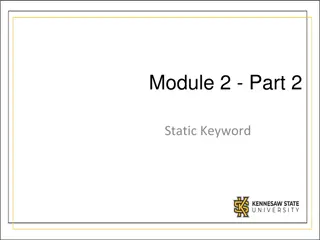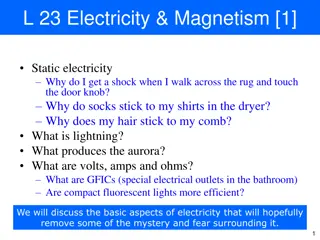
Understanding Static Electricity Charges and Behavior
Explore the fundamentals of static electricity charges, their behavior, and how objects become charged through rubbing and friction. Learn about the parts of an atom, the role of electrons and protons, and the concept of electrical neutrality in materials.
Download Presentation

Please find below an Image/Link to download the presentation.
The content on the website is provided AS IS for your information and personal use only. It may not be sold, licensed, or shared on other websites without obtaining consent from the author. If you encounter any issues during the download, it is possible that the publisher has removed the file from their server.
You are allowed to download the files provided on this website for personal or commercial use, subject to the condition that they are used lawfully. All files are the property of their respective owners.
The content on the website is provided AS IS for your information and personal use only. It may not be sold, licensed, or shared on other websites without obtaining consent from the author.
E N D
Presentation Transcript
Introduction to Static Electricity Charges and How They Behave SNC1P Findlay
Learning Goal I will explain the law of electric charges with reference to common electrostatic phenomena.
What are charges and how do they behave? What will happen when a balloon you have rubbed against your hair is held against a wall?
What are the parts of an atom? Negative charges are the type of electrical charges that can be rubbed off a material. -ve Electrons The negative charges are parts of atoms called electrons. These charges are found outside of the nucleus.
What are the parts of an atom? Positive charges are one type of electrical charges that are left behind when negative charges are rubbed off a material. Protons +ve The positive charges are parts of atoms called protons. These charges are found inside the nucleus.
What are the parts of an atom? Electrically neutral describes materials that have equal numbers of negative and positive charges. The atom shown above has 8 negative charges (electrons) and 8 positive charges (protons), so it is electrically neutral.
How do objects become charged? Have you ever had your hair stick to a sweater when you took it off? Do your clothes stick together when you remove them from the dryer? When different materials are rubbed together, some of the electrons (negative charges) may move from one material to the other.
How do objects become charged? The process of charging materials by rubbing them together is called charging by friction. The materials shown in image A are both electrically neutral. When the two materials are rubbed together, their charges change as shown in image B. (equal numbers of +ves and ves in each material) (excess +ves in the top material and excess ves in the bottom material) What is the electrical charge of the two materials after they have been rubbed together?
Why is hair attracted to a balloon? What has happened to the charges of the hair and of the balloon after they have been rubbed together? Why is the hair attracted to the balloon?
The Law of Electric Charge Depending on the charges given to the two suspended balloons, they will either repel (move apart), attract (move together), or do nothing. The balloons will behave according to TheLaw of Electric Charge.
Charged Objects and Neutral Objects The charged balloon is attracted to the neutral wall, and the charged comb is attracted to the neutral water.
Homework Charge it and Static Charge Detective Worksheets.

